If last year’s top 10 was assembled to gear up for the economic downturn, this year’s reflects the depths of the crunch on the old bank book. I must say that the challenge of resourcefulness can be quite rewarding- eating well for not much money is an affirmation of simple joys. A nearby selection of cheap ethnic grocers and the foresight to stock up yielded many pleasurable meals at home. Rich’s Deli, a Polish grocer was indispensable this year for cheap groceries and beer. I highlighted Joong Boo Korean market last year and this place was still in full effect in 09- fresh veggies and meat from legitimate- seeming farming practices, big bags of grain, pungent condiments, and of course the $1.99 bag of kimchi dumplings which can feed a whole late night posse on half a bag (and they have no MSG or preservatives!). Speaking of late night drunken eating- these were some of the more frequent moments when splurging was to occur- big old rounds of made-fresh-to order fried chicken wings served from behind bullet proof glass from the so-dingy-you-shouldn’t-look-too- closely Super Sub- probably the most often eaten out fare of the year, always smashed around the countertop with plenty of hot sauce and Kewpie mayo. It was a good year at home/ the gallery for cheap communal meals and get-togethers. The R & C brunch parties definitely helped pay off some heating bills, and I also thought they provided great convivial moments during the shitty weather months. Kimchi played a huge role this year- always a jar fermenting away, including at the Hyde Park Art Center’s Artists Run Chicago show, where I demonstrated the process, left it to ferment in the gallery, and then returned to make and serve kimchi pancakes to an audience. Cooking not just for a crowd, but in front of, was something that I embarked on in new social art practices (which I will not burden your food reading time postulating about here) E-dogz, my mobile, bacon- wrapped- hot dog operation was a highlight of my summer. The summer at Ox-Bow was, as usual, food-filled and we got deeper into from- scratch cooking than ever. It was awfully hard for me to pull the gluten-free diet routine with all of Mikey’s amazing breads around. Pickling was big- I realized that the same process used to make kimchi- the let nature take its course route- was the same as used for old school pickle and kraut making. Its all about the old time ways. The mushroom foraging was off the charts with the cool, damp summer- it got to the point when I almost hoped for the rainy weather after discovering dazzling blooms of chicken-of-the-woods and oyster mushrooms that started popping up early at the end of July. The maitake harvests provided an embarrassment of riches in September. The major food voyage of the year was had on a 12 day road trip around the Southwest that my grad program took us on in October. I mapped out stops for quality grub on our itinerary and while we didn’t hit them all, we had some crazy good meals. The Iguana Cafe in Salt Lake City recommended by Michael Rakowitz served the best mole I’ve had outside of Oaxaca. Jordan’s Cafe in Watts provided an education in Southern cultural foodways that I will always cherish. Some must-do spots in LA were hit or miss. The Southern Thai food at the legendary Jitalda was not superior to my favorite spots in Chicago, but I am willing to believe we hit them on an off night. Daikokuya ramen, on the other had, was revelatory, restorative, and offered by far the best ramen I have ever sampled. The food of the Southwest intrigued me, though I am not sure we had best-of-the-best, but a few old school cookbooks I picked up in the travels provide a snapshot of Native American- inflected Mexican fare made for north of the border appetites. Of course, I had some great meals out in Chicago, from a truly memorable first date experience getting over heated by Thai heat at TAC Quick, to discovering the breadth and diversity of Vietnamese food at Tank Noodle. A birthday blast touring around town for a few days yielded perfectly executed Mexican classics at Mixteco Grill, lovingly made charcuterie at Mado, and then, yup, back to TAC. For the most part the food action of 2009- when not scavenging out in the woods, intellectualizing the act of hosting a dinner party, hawking encased meats encased in more meat to drunk art students, and smashing different forms of junk food with Craig- was mostly happening at my home kitchen with cheap and humble ingredients, just getting by- deliciously. The Top 10:
1. Kimchi
I was originally going to include the whole category of “lactic acid” pickling to this entry, but I hate to say that I am somewhat afraid of my maiden batch of sauerkraut and while I love my full sour pickles, anyone who witnessed firsthand the battle with fruit flies and wild yeast blooms during the three week process are incredibly hesitant to touch the things. I still have a bit to learn with those preparations, especially since they take so dang long and require degrees of consistent environment control. I do have kimchi down though, methinks. Well, not the entire spectrum of- after all the term refers in Korean to almost anything edible that is preserved- and the scope of kimchi varieties is incredible, any veggie you can think of, all sorts of seafood, dried fish, mild, spicy, and a plethora of possible seasoning combinations. The kind that I specialize in (that also happens to be the most popular variety in Korea and elsewhere) is kimchi paechu, made from napa cabbage fermented with garlic, ginger, plenty of chile powder, fermented fish products, scallions, and perhaps a few other secret ingredients. This concoction is then let to sit for a week to years, typically strengthening in pungency over time. The scientific process at work is fermentation by lactic acid bacteria that convert the sugars in the cabbage into acids and carbon dioxide, similar to brewing alcohol, though acquiring sour flavors rather than alcoholic. The rate at which the kimchi ferments is dependent on the ambient temperature- so warmer climates speed up the process. The variety I make is a “quick” kimchi that ferments rapidly at around room temperature. Cabbage naturally attracts lactic acid bacteria, so the microbes are already dwelling on the surface on the vegetable. Unlike sauerkraut, kimchi’s extra ingredients help with some of the work- the fermented fish products help speed up the fermentation and the addition of naturally antiseptic garlic, ginger, and chiles prevent unwanted infection. Works for me. There were some spectacular kimchi moments this year- mixing up five gallons of the stuff from a a 50 lb. box that Elizabeth Chodos was kind enough to donate after receiving it as a free gift from Joong Boo for purchasing a certain amount of groceries. As mentioned the funky stuff also shared the spotlight in an actual art exhibition in Artist’s Run Chicago. Kimchi and I are tight- I eat gallons of the stuff, whether on its own, as part of my weekly ritual of making kimchi jigae, a restorative kimchi stew, or whipped up into crowd pleasing kimchi pancakes. There is always a jar of kimchi bubbling away on my countertop working its ancient alchemy and keeping me nourished and happy.
2. Maitake Mushrooms
As you may remember, foraged mushrooms were my number one last year. Well, I was just a beginner then and with a particularly cool and damp summer this year, the shrooming was out of control and I like to think I earned my stripes. Over the summer I enjoyed huge yields of chicken-of-the-woods and oysters, but remained patient for early fall to hunt for my absolute favorite of the wild mushrooms that grow in Western Michigan, the hen-of-the-woods, or maitake. And come September, we harvested bucket loads- over 20 lbs. collectively, found in low lying regions of the forest at the bases of mighty oak trees. Giant otherworldly blooms that look as though the earth itself has blossomed into flowers. Not only are these mushrooms delicious, they are also good for your health- second only to shitake in medicinal qualities in an edible fungus- maitake has immune system boosting properties, liver restorative properties, is proven to inhibit the growth of certain cancer cells, and also provides a host of other remedies including aiding in weight loss. All said, it is the sweet and musky flavor and its meaty chew that reserves its spot so high on this list- it has a similar texture to morels and a flavor profile somewhere between the smokiness of shitake and the rich sweetness of porcini. With the fresh stuff, a sauté in butter with salt and pepper eaten on some good toast is the pure and simple way to enjoy most wild mushrooms. I also think the maitake adapts well to Chinese cuisine, stir fried or braised with Shaoshing wine. They also dry well, so I am still enjoying them into the winter months rehydrated in soups, gravies, and pasta toppings. My favorite maitake dish of the year, though, was the best pizza I have ever made on my own- a slow rise crust topped with a local farmhouse sheep milk cheese, peak season sliced tomato, leek, garlic, and of course the mushrooms, baked at 500. Incredible, probably the tastiest thing I cooked all year, period.
3. Jordan’s Cafe- Watts.
On our grad program trip this year, we serendipitously found ourselves in Watts, LA. Feeling somewhat out of place and overly-sensitive to cultural tourism, all unease was quelled when we stepped inside cheery Jordan’s Cafe. This spot was recommended to us by a friend working on a long term urban renewal project in the neighborhood, so we were greeted as friends- the owner Oscar Neal even personally welcoming our group and giving us some history of his establishment. The food was correspondingly welcoming, for sure made from scratch by loving hands. I love this type of food- Southern American, Soul Food- perhaps the most important foodways of our history- reflecting the patchwork of recipes and cooking techniques developed to suit old world palettes with new world resources (or lack of), slow cooked collared greens and candied sweet potatoes being two examples. And some of this food is just the best kind of American food, period- creamy mac n cheese with crisped caramelized bits, juicy, crunchy fried pork chops, and buttery corn bread. There is great food of this kind in Chicago too, but it’s comforting to pull up to a big plate of meat and three in any unfamiliar neighborhood, whether it be Watts or Austin and feel at home. I had the pleasure to interview Oscar Neal a few months later and his parting words sum up the magic of this experience for me: “Nobody comes in a stranger and no one leaves without being a part of the family.”
Jordan’s Cafe
11332 Wilmington Ave
Los Angeles, CA 90059-1248
(323) 566-8629
4. Polish Delis.
In particular, Rich’s Deli on Western and Iowa kept me well fed on a budget this year. I’ve been hitting up these spots for years, when I lived up in Logan Square it was Kurowski’s or Andy’s. Usually, they were stops for sausage and other Eastern European cuisine-specific ingredients. But when you actually comparison shop at them with a mainstream supermarket such as Jewel, it’s crazy how inexpensive these groceries are. Rich’s sells jumbo brown farm eggs that are hormone and antibiotic free for $1.79. That’s how much medium factory farmed eggs at Jewel cost! And they’re even raised in the same county as Ox-Bow in Michigan! Pre-made soups and stews, a hearty, ready to eat meal for under $2. Loaves of locally baked rye and whole grain breads for $2-$3. House made smoked salmon for $7 a pound, the trout under $5. And the sausage counter- don’t be shy, the ladies aren’t that mean and more and more I’ve found them willing to speak to me in English. Any of the smoked meats are divine- try out the whole smoked pork bellies with short ribs attached “Gypsy bacon” as they label it- throw some chunks of that in a pot of beans. The sausages are fantastic and all under $3 a pound. I still can’t figure out which ones are which, but generally they’re all good and not too dissimilar in flavor. I’m excited to try their whole smoked chicken that costs under $2 a pound this winter. The produce department always stocks happy looking stuff that smells like real growing things. They even label the origin states on a lot of the stuff. Over in the beer cooler, those $4 packs of Bittburger tallboys kept me from touching any of Milwaukee’s worst this past winter. Oh and cheap, good chocolate. I could go on, but I suggest you find your local Polish deli and buy real food for real less!
Rich’s Deli
857 N Western AveChicago, IL 60622 (773) 235-5263
5. Head to Tail Eating.
This is not a new concept, in fact just about every culture except our own has greater respect and awareness for utilizing every edible morsel of an animal’s carcass. Our own aversion to the “nasty bits” likely results from the over-abundance of cheap meat that our industrial agricultural complex irresponsibly over-produces for our supermarkets. Why eat tripe when you can eat tenderloin every day, throw out the guts to the dogs! Fortunately the ethics of the Slow Food movement with its deeper appreciation for the old ways of agricultural responsibility are finally taking hold in our own dining scene. The movement has been flourishing in Europe for over a decade, where chefs such as Fergus Henderson of London’s St. John restaurant have been cooking up pig’s trotters and calf heart for enthusiastic foodies since 1994. Nowadays at all the best new restaurants in Chicago from the Publican, to Mado, to the Bristol you can sample a range of gutsy dishes like sweetbread schnitzel, liver pate, and roasted marrow bones, menu items which are gradually becoming culinary buzzwords. Of course, for years, there have been variety meat options on menus of Chinese, Vietnamese, and even old school French spots, but this trend of offal eating is an important step in our national conscientious toward food source awareness and a culture of economy rather than excess. Highlights for me this year were rolled pork head at Mado, pho with all the goods such as tendon and tripe at Tank Noodle, the smoky brain of the roasted pig at Ox-Bow, and making due with every part of the chicken in my own adventures in butchery- its skin fried in its own fat was particularly good.
6. Pork Belly.
So, what’s the best part between the nose and tail? For me, probably the belly, where bacon comes from! Yeah this is an uber-trendoid ingredient, on menus everywhere for better or for worse. A once overlooked ingredient on most American dinner plates, I would take a guess that its recent rise to fame is an extension of the perennial bacon trend. Unlike thinly sliced bacon, the raw, uncured slabs of belly are not incredibly easy or quick to cook. Fry up an inch thick slab and you’ve got a chewy, fatty thing that won’t seem too appetizing. The fattiness is the appeal, though- pork belly provides a decadent parfait of equal parts meat to fat, which lends itself well to slow cooking, self braising in its own fat. You can slow roast it, but a braise followed by a browning is how I prepare it at home. I buy Kurabota “black” pork belly at the Korean market, an heirloom breed also know as Berkshire that is prized for the clean taste of its meat. Typically I eat it with kimchi in some format, so I use a Korean seasoning. In a shallow pan I bring to a boil a few cups of water with a splash of soy sauce and a good tablespoon or so of gochujang, fermented Korean chili paste. I then simmer slices or cubes of pork belly for up to an hour, depending on their thickness. Its nice as the liquid cooks down, you are left with a glaze of that caramelizes nicely and coats the pork. I had less spicy, but similarly prepared “chashu” in a bowl of exquisite ramen at downtown L.A.’s Daikokuya, which was an eating-out highlight of my year. Eating around Chicago, my favorite prep of pork belly that I sampled this year was in a taco at the recently opened tequila bar, Big Star- morsels both crunchy and unctuous, delightful.
7. Tank Noodle’s Raw Beef Salad.
I really enjoy eating raw beef. It seems to scare the crap out of some people. Less safe than sushi, perhaps, though a similar sensation in eating both of them. I enjoyed a lot of raw beef this year from Paramount Room’s superb steak tartare with raw quail egg to Laschet’s legendary hackpeter (German style tartare) to freaking out Tommy Coleman over the summer by sampling Montello Market’s sublime aged beef before it hit the grill. My fave, though, was Tank Noodle’s raw beef salad. Think Thai grilled beef salad- a citrus and garlic based dressing with a sweet note, sprigs of fresh mint, and sharp raw onion, while definitely a little lighter on the chili heat. It also has a ceviche-like quality, especially since there are crackers provided for scooping up bitefulls of luscious and brightly flavored raw beef- these are deep fried shrimp crackers at that. A study in contrasts, supple rich meat, citrus spikiness, herbal freshness, and crunchy shrimp crackers- this is the single one best dish I ate at a restaurant this year (quite a few times).
Tank Noodle
4953 N Broadway(between Ainslie St & Argyle St)
Chicago, IL 60640 (773) 878-2253
8. Not Torching the Pig this Year.
It’s my favorite thing that I cook every year. 08 was a crappy year, 09 was much better. That’s all, folks!
9. That’s a Burger.
The bottom of this list is going to make my friends and I out to look like drunken fast-food eating slobs, which is not necessarily arguable. Somehow my right hand man in such adventures always seemed to be Mr. Craig Doty, so let’s blame it on him now that he’s moved away. Craig and I were goofing off on a Friday, hangovers in tow. We were heading to Chinatown for the reasonable $4.95 lunch special at Spring World, but something didn’t feel right. We needed something greasier and as it was a lovely March day for a drive, we continued to voyage south. Even though I grew up on the Southside (read: burbs), somehow I’m so infrequently heading past Pilsen that it’s pretty easy for me to screw up my directions. Usually I neglect the east directional in the address thinking that Chicago does not extend beyond 300 east. So let’s just say we were real hungry when we hit 2134 e 71st. Its quite a pretty stretch of town that I had never been to- traintracks in the center of the street, opening up a spacious boulevard that is far enough away from downtown that there is a wide expanse of sky on a sunny day. This spot is another hole in the wall from where you are served your grub from behind bullet proof glass. I kept my order simple with a single (I do believe it is a 1/2 lb.) with grilled onion, ketchup, mustard, and pickle- I like to keep it simple with the condiments. After about 20 minutes and a bit of heckling from some young hoodlums in sagged out pants, our burgers were ready to take to my car and scarf. Craig has a hard time not eating at a table- he’s so into ketchup that he needs a level surface to spread out and not make a mess. He got pretty quiet once he dug into that burger- loosely packed, incredibly juicy and crisp around the edges from proper griddling procedures, and seasoned perfectly with just salt and pepper. The where-the-hell-are-we and why-the-hell-are-we-eating-in-the-car aspects of the afternoon were worth the bliss in those buns. Briefly, to address the burger-crazed hype of recent years: I won’t go to Kuma’s anymore. You can’t taste the meat under all that… meat or whatever other junk you order on the damn things. You can actually order sausages and eggs and other stuff on your burger at That’s a Burger, so its not as if that concept is even original. The burgers are most definitely not hand formed at Kuma’s either, if even fresh. There is a new spot in Evanston, Edzo’s which has a professionally trained chef at the helm, preparing burgies the old fashioned way and doing it right- my 2nd favorite burger of the year. There’s others too, upscale chains and the like. I eat maybe five burgers a year, so when I have one it better be worth it. That’s a Burger serves up a hand made, meat forward burger that is best enjoyed with very basic toppings.
That’s a Burger
2134 East 71st Street
Chicago, IL 60649-2116
(773) 493-2080
10. Super Sub Wings.
As I stated, this was probably the food that I ate the most often that was prepared outside of my own kitchen. Its late night, drinking snacks for sure. They are not so good cold, when you have your sober wits about you- that not-the-freshest-oil taste- but man, nothing delivers like fresh out of the fryer chicken wings drenched in hot sauce after you’ve had a few. I love this place, open all night, looking like any hole-in-the-wall ghetto sub shop with a grimy seating area populated with just about anyone who’s still up (or not) at 3 am. The guys that work here are a big part of the charm- gracious Pakistani guys who I am sure put up with the worst types of customers. They treat us right, I guess we are likable folks even in the worst of states- there always seems to be an extra wing or two with our orders. I watch them every time, hand battering the wings and frying them fresh. They taste way better than the nearby Wicker Park Harold’s, where the same kind of care is not evident in the preparation. Everybody has their own approach to the styrofoam-container spread of wings. Personally, I think the seasoned fries are too greasy and over-processed, but a lot of the gang seem to love them. We all agree that there’s something irresistible about the griddled garlic bread, greasy hands always greedily snatching a fair share. Some of us like mayo with our fried chicken, which grosses others out. There is, however, a consensus amongst us, the late night R & C drinking crew- Super Sub wings are the go-to drinking food and are deceptively higher quality than one would imagine food would be from such an easily overlooked grease shack in the hood.

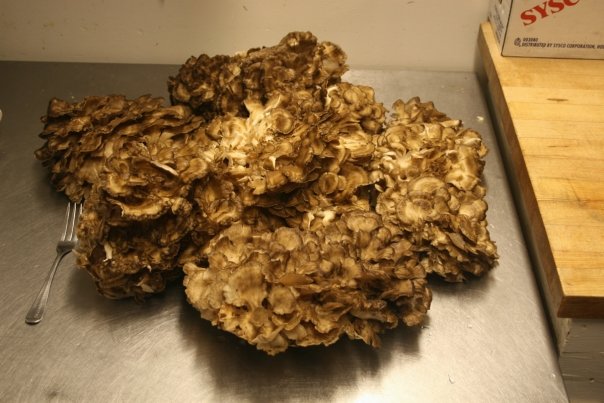

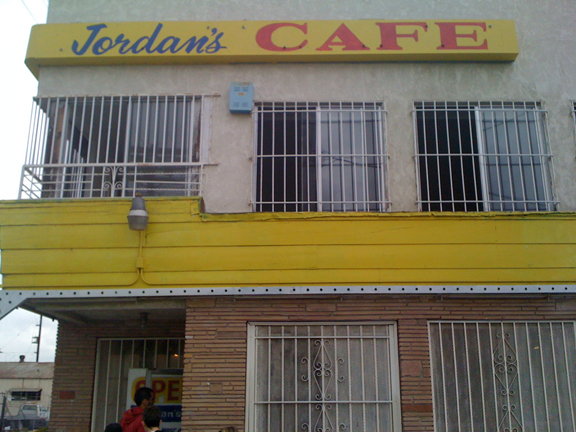
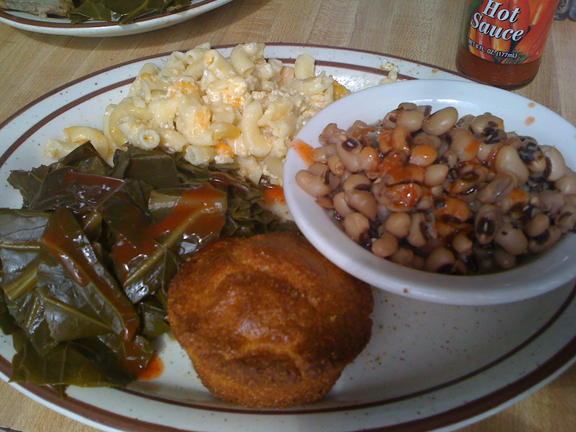
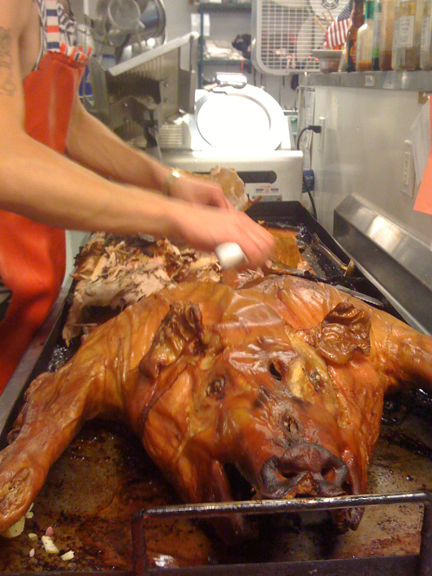


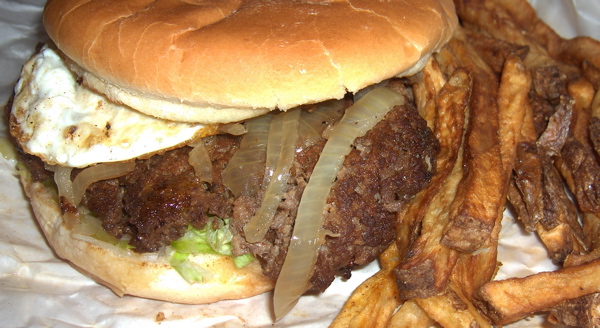
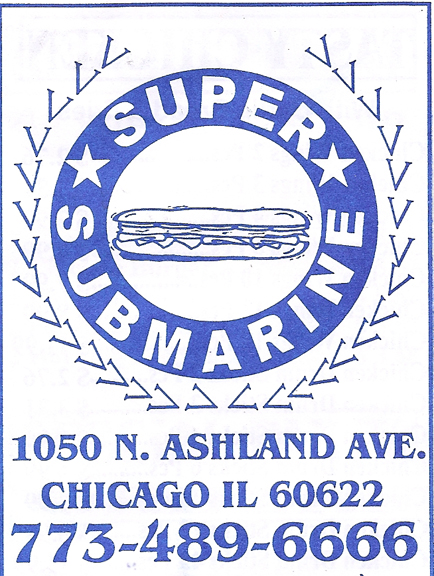
4 Comments